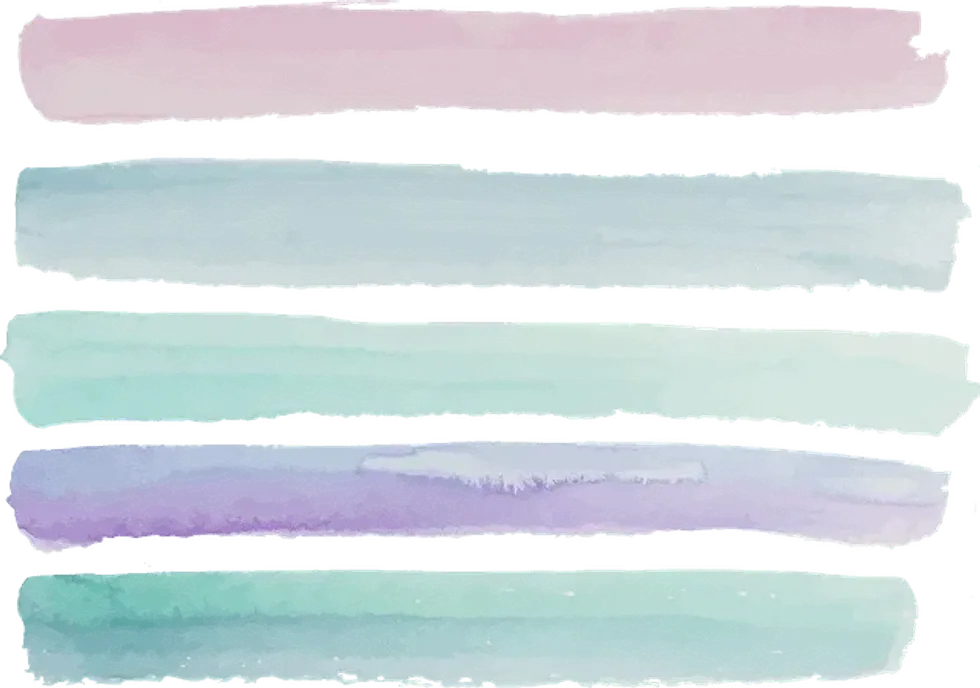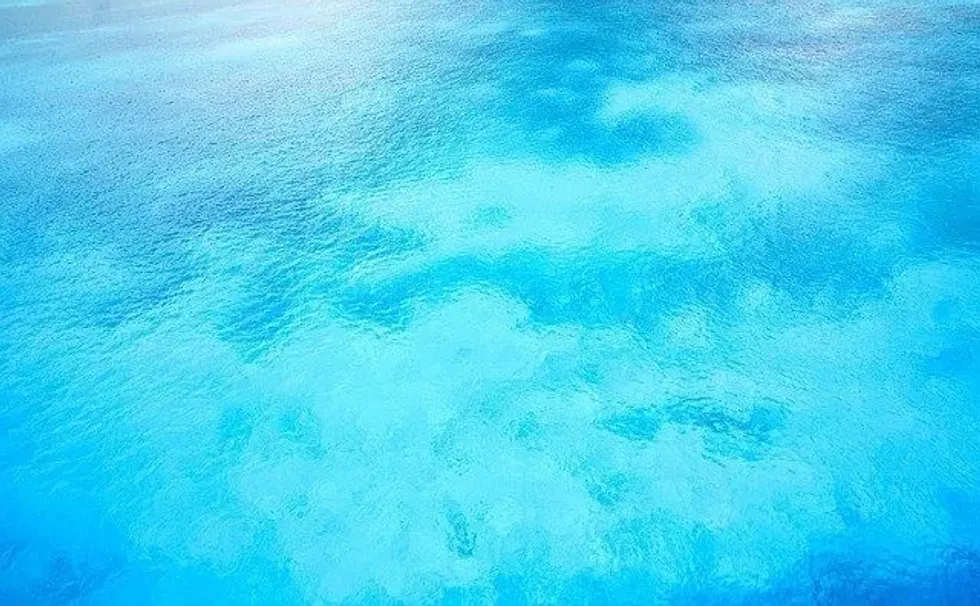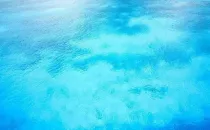What Colors Make Turquoise? Creating This Beautiful Blue-Green Color

Different shades of Turquoise depend on the ratio of blue to green colors.
Did you know that turquoise is named after the gemstone, from the French term 'pierre tourques', meaning Turkish stone? It is a naturally occurring crystal that has a solid, blue-green-colored pigment and is the result of hydrated copper and aluminum phosphate.
Turquoise, which is placed between blue and green on the color wheel in nature, is a combination tone of pale blue, green or blue with a little bit of yellow.
It is a stunning color pigment that can make you feel cheerful and energetic. If you've ever witnessed the sun set into the beautiful turquoise waters of a beach, then you have probably felt the great sense of peace and calm that the color can bring.
The mere sight of the color turquoise may make the brain release happy hormones that instantly cheer our heart and spirit, making us momentarily forget the daily troubles of existence.
Imagine sunlight striking the water of shallow seas! The color which you see is called turquoise. So, is turquoise a paler blue or on the green palette? It is both!
Both have amounts of blue in them. When you see this color pigment, your brain feels happy and peaceful. Some believe that turquoise also promotes creativity so you feel like doing new things all the time. It is a hue associated with the sea. It is also connected with self-confidence and balance.
Turquoise was first used as a name for the color in English in 1573. There are many variants of the color turquoise like the color celeste, which is a shade of turquoise with more sky blue in it.
We also have light turquoise, having lighter tones of the color. Turquoise blue sits very close to turquoise on the color wheel and is just slightly more blue. We also have medium turquoise, dark turquoise, and bright turquoise.
Now, you might have many questions about the color, for example, where can you use the color, what color pigments go with turquoise, and many more. We can experiment with various vibrant colors to find out the best process to achieve the desired outcome. So, let’s find out by reading this article about the different shades of turquoise paint.
After you have read all about creating a mixture to create the desired hues of turquoise, do read about what colors make gray and what colors make gold?
How to mix colors to get turquoise?
Many artists in the world want to know what colors make turquoise. You might be thinking about what colors you should use to make turquoise and how you create turquoise color and its variations from scratch.
How do you make turquoise with acrylic paint? Is it as simple as combining several hues of cyan until you get a gemstone-tint of natural blue? Not at all! There are two distinct types of process to make turquoise paint. The one you should choose depends on the ratio of blue and green that you want.
The first method that you can experiment with is using a combination of basic blue, basic green, and vibrant white to create a light, authentic hue or shade of turquoise. Keep in mind that, whenever you combine blue and green palettes, you should get a beautiful shade of dark cyan.
You may then add tiny amounts of white to achieve the appropriate degree of turquoise.
In general, you should begin your turquoise formula with two parts blue and one part green. Using this approach, you can easily add extra intensity to your blue-heavy turquoise to achieve some fascinating color tones.
Mixing blue and yellow is the second method to create a beautiful stone turquoise color. With this technique, you only add a little bit of yellow to an already-existing blue color pigment to make turquoise color palettes.
After you finish color mixing, if you want a more brilliant and accurate turquoise tone, try mixing one part white with six-part blue. Varying quantities of white can also help you to make green and blue turquoise color pigments that range from lighter to deeper!
What is the difference between teal and turquoise?
Teal and turquoise are two blue-green color hues that are relatively similar. Because it is tricky to differentiate between teal and turquoise, these two lovely colors may frequently create confusion in our minds. Understanding the specific shade and its name can assist you in finding and using the right hue in the appropriate context.
The color teal is a deep, greenish-blue. The term teal is derived from the common teal, a beautiful bird with the same greenish-blue pattern on its head.
This color may be made by combining a bit of blue and green in a white base. You may also intensify this color by adding grey or black according to your liking.
The main difference between teal and turquoise is that turquoise is lighter than teal and closer to blue than green. Teal is a deep blue-green color that is comparable to cyan, whereas turquoise is a blue color resembling the fascinating turquoise gemstone.
Although these two colors are very similar, turquoise looks great if you pair it with teal. Both hues are related to the sea and are connected with it; they make may people think of open waters and relaxing on the beach.
Turquoise may bring a brighter and lighter touch, but teal's richness can be calming and remind you of the ocean's depths.

How to use turquoise?
Turquoise, like other cyan hues, looks brilliant when combined with certain colors. When incorporating turquoise into a color scheme, there are several approaches you may use. An example of complementary colors are cyan and red. This means red will look great when combined with turquoise.
When you want to make turquoise using other hues, though not everyone is seeking this degree of vibrancy, you may make green turquoise using both magenta and yellow. Green and blue turquoise may be used to create a more formal effect by combining them with darker tones of a cobalt blue color palette.
A good way to use the color is to mix it with other natural hues, such as earth tones, wood tones, and deeper blue tints.
Pairing a shade of turquoise with any of these hues works too. Turquoise can also be paired with hues that are opposite to turquoise on the color wheel, such as coral or tangerine.
A blue-green color and different shades of turquoise often symbolize balance in the world and are typically associated with development and growth. Some people think that they flawlessly mix the energizing and calm character of blue and the spectacular magnificence of green.
So, what do turquoise clothes represent? If someone is wearing turquoise clothing it can symbolize a lot of things to different people.
As stated, some people believe that turquoise manifests mindfulness, silence, understated potential, knowledge, progression, mental discipline, chastity, exclusivity, tranquility, completeness, solace, artistry, luck, creative thinking, fortitude, and personal integrity. The color of your garments may also have a significant influence on your conduct and emotional responses.
So, how might our brain interpret turquoise? The answer to this lies in the fact that turquoise is often viewed as cold, even though our impression of colors is totally personal.
It blends the characteristics of aquamarine blue and green, that are both soothing, and induces harmony. Turquoise, in many people's minds, evokes feelings of peace, development, artistry, innocence, and beauty.
Turquoise is appropriate for usage in any industry that involves public engagement, education, storytelling, or computing. For some people, it encourages better personality traits, clarification of thinking, and rational reasoning. Mostly during the 90s, turquoise was a widely-used vehicle color.
Turquoise works nicely with water-related enterprises, such as pure water filtration firms, pool service companies, and water activities. It has a creative aspect that is great for sports-related enterprises. It also works beautifully with red, orange, or yellow.
Turquoise can have a subtle impression when blended with pale pink, lilac, or light lemon, making it perfect for the fashion or cosmetics industry, as well as shopping or household goods businesses. So hopefully, by now, most of your questions are answered regarding the brilliantly beautiful color of turquoise.
What other colors can you make with turquoise?
You already know that there isn't just one turquoise color. There are several turquoise hues and colors that you can create when you combine a certain ratio of pale and dark colors.
Before you begin, you need to understand what tints and shades are. Tints are light, more subdued hues, generated when white is mixed with another color. Shades, on the other hand, are made by combining black with another hue to create a deeper color.
The saturation, or strength, of the specific color you make, is determined by the quantity of black or white you add. Brighter hues, for example, will have less white and black. When black and white are added, it gives a 3-D effect.
For creating multiple colors of turquoise, you may combine a ratio of blue, green, and white in different ways and quantities. As you already know, Turquoise is made up of pale blue and green, however, a greater blue-to-green ratio can be mixed to create a different hue of turquoise blue.
Using varying quantities of white can also help you produce blue turquoise hues that range from lighter to deeper. Some different types of turquoise include:
Blue tints of turquoise. These turquoise hues are created by increasing the amount of mixed blues like turquoise blue, blue-green, celeste, cerulean, electric blue, ocean, robin’s egg, and midnight.
Green tints of turquoise. Bright turquoise hues are created by increasing the amount of green pigments like turquoise green, tiffany, keppel, light cyan, sea green, mist, and aquamarine.
Darker shades of turquoise with gray undertones. These turquoise hues are created by mixing blue and green with small quantities of gray like bright teal, rain, palladian blue, and the darker eucalyptus tone.
What colors go with turquoise?
Turquoise is a color with a darker green-yellow undertone. Turquoise is known for being a soothing and pleasant color. It may be used to give a touch of vitality to a space. This quality is borrowed from the color yellow. It must, nonetheless, be in harmony with other hues to avoid becoming overstimulating.
There are a few color combinations that you could go for when it comes to turquoise. Turquoise and pink is a bit of a daring combination.
Turquoise and white can appear to be a calm or lively color combination. Because turquoise is a mix of blue and yellow, it conveys the same energy as yellow, and since turquoise and yellow are both bright hues, they must be properly balanced in a setting.
The trick to mixing these colors is to begin with mostly neutral hues, then adding yellow, and then utilizing turquoise as an accent color.
Brown's deep tones provide a wonderful counterpoint to turquoise's vibrancy. Turquoise and light blue together are a playful but relaxing color combination; turquoise and light blue create a peaceful atmosphere since they both reflect the calm typically associated with blues.
What does the color turquoise mean?
Turquoise, a combination of blue and green, displays many of the similar calm and relaxing properties that we find in all blues and greens.
Turquoise is said to have attributes such as freshness, power, knowledge, peace, fullness, inventiveness, emotional stability, good fortune, spiritual grounding, friendship, affection, happiness, tranquility, tolerance, intelligence, and faithfulness. Turquoise tones have a beautiful, graceful feel to them.
Darker turquoise colors, such as teal, have a more refined appearance. Shades of turquoise, which are frequently used to symbolize water, are also known as aqua and aquamarine.
The gemstone turquoise is frequently used in jewelry, particularly in the southwestern United States and the Middle East. Turquoise was used in one of the earliest protective amulets and was a sign of riches and success in many primitive civilizations.
Turquoise was linked with spiritual connections, psychic awareness, and protection from injury and bad energy. The turquoise gemstone represents friendship and gives calm to the environment, as well as good luck to the viewer.
The turquoise stone is said to contain immense knowledge and wisdom within it. Turquoise is considered to be a stone that signifies self-realization and aids in logical thinking along with energy and creativity.
Since turquoise is a mixture of the colors green and blue, it has the combined properties of both colors. Green color falls perfectly on the visible spectrum and our eyes can see it better than any other color since it reaches the retina perfectly.
Green is relaxing, comfortable, and pleasant, which is why artists who are about to go on stage or air rest in green rooms.
On the other hand, blue is the hue of the sky, seas, and rivers. Blue is harmless, classic, and conventional because of its worldwide liking and ecological prominence.
It is regarded by some people as a symbol of security and dependability.
Therefore, to many people, the color turquoise is an uplifting color that is linked with refreshing the spirit, restoring overall health, and eliciting good thought. Turquoise is also supposed to improve spiritual growth, clarify thought, and awaken the heart to potential avenues.
Here at Kidadl, we have carefully created lots of interesting family-friendly facts for everyone to enjoy! If you liked our suggestions for what colors make turquoise then why not take a look at what colors make pink, or what colors make tan?
We Want Your Photos!
More for You
Bachelor of Science specializing in Computer Science

Christian MbaBachelor of Science specializing in Computer Science
Christian Mba is an experienced blogger and content writer with over a decade of experience. He holds a Bachelor of Science degree in Computer Science from Nigeria and has a keen interest in Python programming. Along with his writing and blogging expertise, he is also an SEO specialist with more than six years of experience. Chris, as he is commonly known, has a passion for music and enjoys playing the piano.
Disclaimer
1) Kidadl is independent and to make our service free to you the reader we are supported by advertising. We hope you love our recommendations for products and services! What we suggest is selected independently by the Kidadl team. If you purchase using the Buy Now button we may earn a small commission. This does not influence our choices. Prices are correct and items are available at the time the article was published but we cannot guarantee that on the time of reading. Please note that Kidadl is a participant in the Amazon Services LLC Associates Program, an affiliate advertising program designed to provide a means for sites to earn advertising fees by advertising and linking to Amazon. We also link to other websites, but are not responsible for their content.
2) At Kidadl, we strive to recommend the very best activities and events. We will always aim to give you accurate information at the date of publication - however, information does change, so it’s important you do your own research, double-check and make the decision that is right for your family. We recognise that not all activities and ideas are appropriate for all children and families or in all circumstances. Our recommended activities are based on age but these are a guide. We recommend that these ideas are used as inspiration, that ideas are undertaken with appropriate adult supervision, and that each adult uses their own discretion and knowledge of their children to consider the safety and suitability. Kidadl cannot accept liability for the execution of these ideas, and parental supervision is advised at all times, as safety is paramount. Anyone using the information provided by Kidadl does so at their own risk and we can not accept liability if things go wrong.
3) Because we are an educational resource, we have quotes and facts about a range of historical and modern figures. We do not endorse the actions of or rhetoric of all the people included in these collections, but we think they are important for growing minds to learn about under the guidance of parents or guardians.







